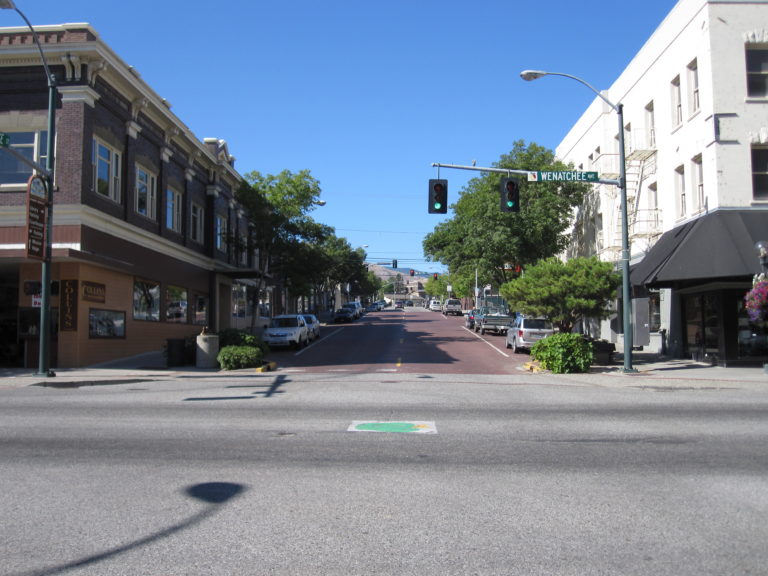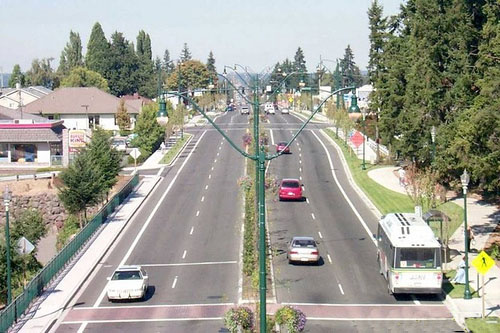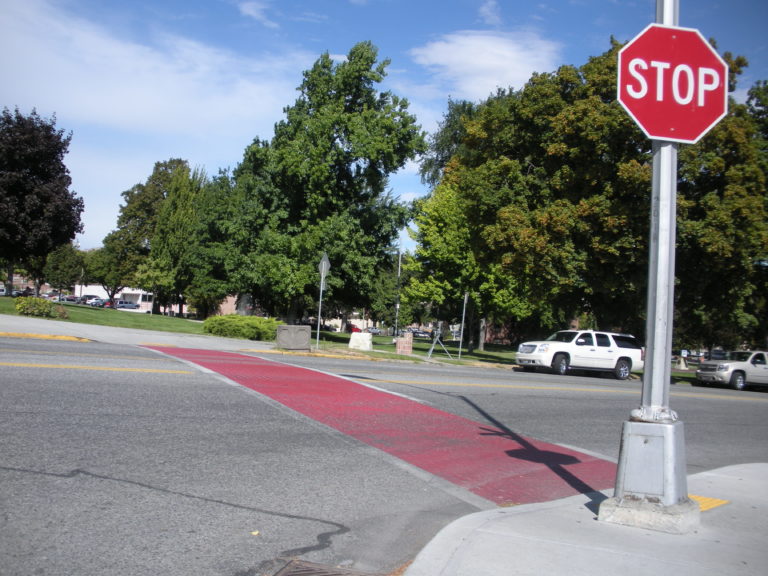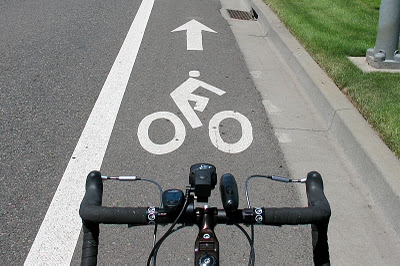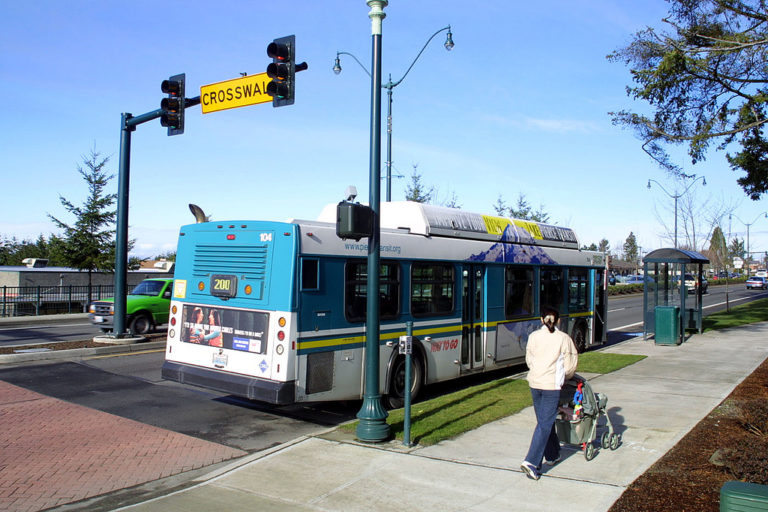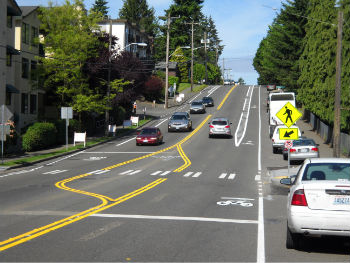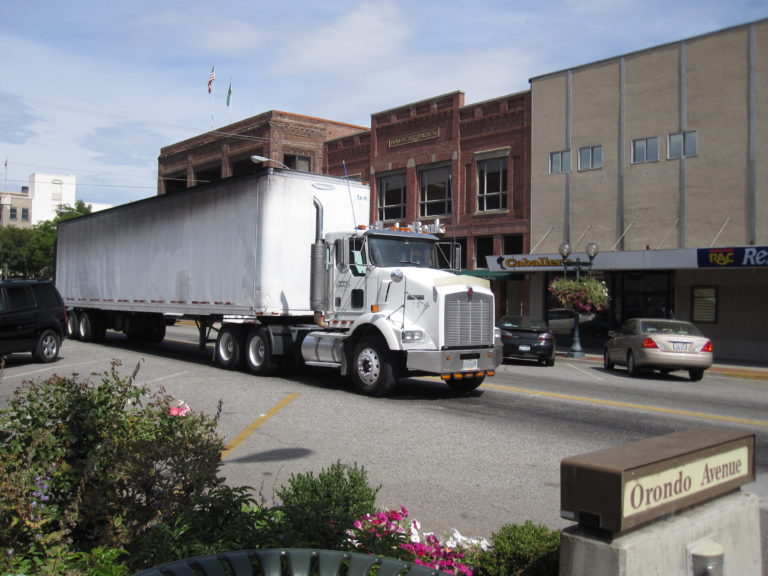There are 500 miles of Main Streets in Washington State that are also State Highways. Complete Streets and Main Street Highways treatments must be context-specific based on size, location and community needs. In 2011, the Washington State Department of Transportation (WSDOT) asked Storefront Studio to produce a report about the benefits of Complete Streets policies and how they could be applied to three local main streets communities – Wenatchee, Grandview and Roslyn.
 (1/7) There are 500 miles of Main Streets in Washington State that are also State Highways. Complete Streets and Main Street Highways treatments must be context-specific based on size, location and community needs. In 2011, The Washington State Department of Transportation (WSDOT) asked Storefront Studio to produce a report about the benefits of Complete Streets policies and how they could be applied to three local main streets communities - Roslyn, Grandview and Wenatchee.
(1/7) There are 500 miles of Main Streets in Washington State that are also State Highways. Complete Streets and Main Street Highways treatments must be context-specific based on size, location and community needs. In 2011, The Washington State Department of Transportation (WSDOT) asked Storefront Studio to produce a report about the benefits of Complete Streets policies and how they could be applied to three local main streets communities - Roslyn, Grandview and Wenatchee. "Washington State's Complete Streets bill, House Bill 1071, states that “Urban main streets should be designed to provide safe access to all users, including bicyclists, pedestrians, motorists, and public transportation users. It is the intent of the legislature to encourage street designs that safely
"Washington State's Complete Streets bill, House Bill 1071, states that “Urban main streets should be designed to provide safe access to all users, including bicyclists, pedestrians, motorists, and public transportation users. It is the intent of the legislature to encourage street designs that safely
meet the needs of all users and also protect and preserve a community’s environment and character.” When a street goes beyond being a vehicular route through town, and serves as the pedestrian gateway to the community, it can activate one of the busiest spaces of the town. A walkable street might have reduced speed limits, medians, walkway markings, bulb-outs, buffer spaces, pedestrian visibility, and more time to cross the street.
When a street goes beyond being a vehicular route through town, and serves as the pedestrian gateway to the community, it can activate one of the busiest spaces of the town. A walkable street might have reduced speed limits, medians, walkway markings, bulb-outs, buffer spaces, pedestrian visibility, and more time to cross the street. Bicyclists ride for several reasons, such as commuting, errands, personal visits, transporting children to school, exercise and recreation. If bicycle facilities are located close to destinations like shops, schools and parks, the bicycling network will be more appealing and successful. There are valuable economic, social, and health benefits to a bikeable community. Bikes can be better accommodated with facilities, signage, and dedicated space in the road.
Bicyclists ride for several reasons, such as commuting, errands, personal visits, transporting children to school, exercise and recreation. If bicycle facilities are located close to destinations like shops, schools and parks, the bicycling network will be more appealing and successful. There are valuable economic, social, and health benefits to a bikeable community. Bikes can be better accommodated with facilities, signage, and dedicated space in the road. A street designed thoughtfully for all users enables a reliable, efficient public transit system as an alternative mode of transportation. In addition to reducing traffic crashes and pollution emissions, public transit increases physical activity, improves mental health, and increases accessibility to medical care and healthy food. By designing with all users in mind, the public transit system would contribute to increased mobility, connectivity and safety along these roads. We can encourage transit use by smart placement, car access, waiting areas, pedestrian and bicycle access, HOV lanes, and pull-outs.
A street designed thoughtfully for all users enables a reliable, efficient public transit system as an alternative mode of transportation. In addition to reducing traffic crashes and pollution emissions, public transit increases physical activity, improves mental health, and increases accessibility to medical care and healthy food. By designing with all users in mind, the public transit system would contribute to increased mobility, connectivity and safety along these roads. We can encourage transit use by smart placement, car access, waiting areas, pedestrian and bicycle access, HOV lanes, and pull-outs. Typical roadways are often designed primarily for cars. The Complete Streets concept aims to integrate all modes of transportation. While personal vehicles are an important factor in road design, roads must provide safety for users of all modes and abilities. A comprehensive design strategy can also alleviate traffic and vehicle safety concerns. Drivers must be made aware of the other modes of transportation with which they share the road. As the dominant transportation system, personal vehicles can pose serious dangers to pedestrians, bicyclists, and transit users. We can address car-related needs by reducing speed, providing parking areas, using noise barriers and communication, and reducing lane width and quantity.
Typical roadways are often designed primarily for cars. The Complete Streets concept aims to integrate all modes of transportation. While personal vehicles are an important factor in road design, roads must provide safety for users of all modes and abilities. A comprehensive design strategy can also alleviate traffic and vehicle safety concerns. Drivers must be made aware of the other modes of transportation with which they share the road. As the dominant transportation system, personal vehicles can pose serious dangers to pedestrians, bicyclists, and transit users. We can address car-related needs by reducing speed, providing parking areas, using noise barriers and communication, and reducing lane width and quantity. Washington State’s abundant natural resources and thriving economy require efficient oversize vehicle and semi-truck accessibility. Logging trucks, agricultural equipment, horse trailers, and cargo beds are common across the state. Maintaining truck routes in all contexts is important. The requirements for trucks are similar to that of personal vehicles, but more extreme. Trucks need more space, more allowances, and more noise control.
Washington State’s abundant natural resources and thriving economy require efficient oversize vehicle and semi-truck accessibility. Logging trucks, agricultural equipment, horse trailers, and cargo beds are common across the state. Maintaining truck routes in all contexts is important. The requirements for trucks are similar to that of personal vehicles, but more extreme. Trucks need more space, more allowances, and more noise control.
